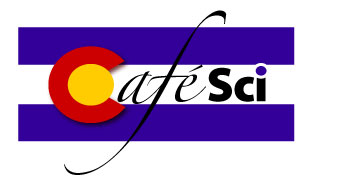About the topic
Bio
Get the Flyer (pdf)
About the topic
Noah Fierer is working in an interesting and little-known arena, the interface between humans and the microbial world. He writes: "We study the ecology of bacteria, fungi, and archaea in both natural and engineered systems. We examine those factors that influence the spatial and temporal variability in microbial communities and the role of microbes in the environment. Current work focuses on those microbes inhabiting soil, building surfaces, the human body, and the atmosphere."
In 2010, Dr. Fierer received a $655,000 NSF grant to study the effects of nutrient addition on soil microbial communities. Pollution and farming practices, such as the addition of fertilizers, are leading to chronic inputs of nitrogen and phosphorous in the soil beyond normal levels. The Fierer group will look at the impacts of these additions on microbes, which are important organisms for maintaining soil fertility. They have also been exploring ecosystems very close to home—in the microbes living in humans and in the ordinary indoor environments we all inhabit.
A recent article in Science says: "While many scientists have counted the germs on indoor surfaces, Fierer and Rob Dunn, an ecologist at North Carolina State University in Raleigh, have mounted a large citizen-science survey to assess the biodiversity of interior spaces. They have been finding unusual microbial communities in ordinary places, like TV sets; it is possible that these represent unique habitats unlike any others on the planet. Where do the novel microbes come from? What do they eat? Fierer and Dunn plan to compile similar microbial survey data from the homes of thousands of volunteers from different parts of the world. Does the microbial makeup of the built environment differ with location, the density of the surrounding population, or whether a home is freestanding or an apartment? It will be the first comparison of houses from a wide geographic range.
"This "basic Lewis and Clark exploration" will offer new information. But the real goal, Dunn says, "is to understand not just what is there but why, and to see the extent to which these species are associated with our lifestyles, geography, and climate." While some scientists worry that such efforts may simply lead to meaningless lists of microbes, new information is pouring in about the microbial denizens of other kinds of buildings as well.
"In work that blends microbial ecology, indoor air science, and building engineering, researchers have begun scouring classrooms, offices, and hospitals for microbial life and analyzing the factors that affect human exposure to it."
At the same time that all this new work is being undertaken, the world of the human "microbiome" has moved towards center stage in medicine. It has begun to be established that we acquire the huge number of bacteria in our guts and on our skin shortly after birth, mostly from our mothers. The proportions of the thousand or so bacterial species in and on us is fairly constant, but changes in certain diseases. Sometimes the bugs change first, and we get sick; more often, we get sick and the bugs change, and that can make the illness worse. Can a healthy bacterial mix cure someone whose own bugs are out of whack? Can a couple of yogurts do it?
ScienceDaily story about Noah's work: New Hand Bacteria Study Holds Promise for Forensics Identification
Bio
 Dr. Noah Fierer earned his Ph.D. in Ecology from the University of California – Santa Barbara in 2003. He is currently Assistant Professor of Ecology and Evolutionary Biology at the University of Colorado at Boulder. Dr. Fierer's research interests include microbial ecology and biogeography, as well as terrestrial ecosystem ecology and the impact of global change factors on microbial communities and processes.
His current research includes the biogeography of soil microbial communities at continental and regional scales and the impact of nutrient additions on carbon and nitrogen cycling in soil. It also includes understanding the factors which influence the structure and diversity of archaeal, fungal, bacterial, and viral communities in the soil environment.
Dr. Noah Fierer earned his Ph.D. in Ecology from the University of California – Santa Barbara in 2003. He is currently Assistant Professor of Ecology and Evolutionary Biology at the University of Colorado at Boulder. Dr. Fierer's research interests include microbial ecology and biogeography, as well as terrestrial ecosystem ecology and the impact of global change factors on microbial communities and processes.
His current research includes the biogeography of soil microbial communities at continental and regional scales and the impact of nutrient additions on carbon and nitrogen cycling in soil. It also includes understanding the factors which influence the structure and diversity of archaeal, fungal, bacterial, and viral communities in the soil environment.
